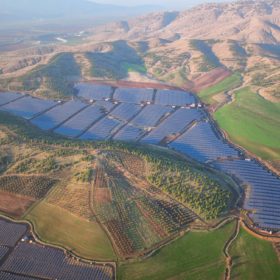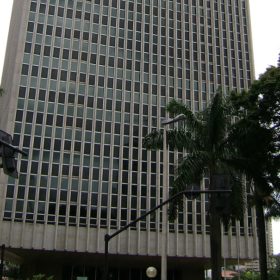Ferroglobe to open solar grade silicon factory in Spain by the end of 2018
The London-based metal alloy and metallic products provider has conducted a test on 500 kW of wafers in cooperation with the Silicon Module Super League (SMSL). In the next weeks, it will also test 500 kW of PERC cells relying on its own “black silicon”, in coordination with another Super League producer.
HPQ Silicon’s plan to launch integrated PV production moves forward
The Quebec-based mining company has received financial support to the tune of $1.4 million from the local government to start a pilot production of 50 MT. The production equipment will be installed at the company’s facility in Montreal at a cost of $6.8 million.
Peru introduces net metering, new DG rules for RE up to 10 MW
The Peruvian Government has submitted to public consultation the draft of Supreme Decree for the regulation of distributed generation (DG), which is the secondary legislation necessary to implement the DG law first promulgated in 2015. Talking to pv magazine, the president of the Society of Peruvian Renewable Energy explains how the new rules will not only introduce a net-billing scheme for installations up to 200 kW, but also a scheme for projects up to 10 MW, which is very similar to the so-called Pequeños Distributed Generation Media (PMGD) program in Chile.
Omega Geração acquires 50% of 312 MW Pirapora solar complex in Brazil
Canadian Solar and EDF will maintain a stake of 30% and 20%, respectively, in the solar plant. The value of the transaction is estimated at BRL 1.1 billion (US$283.6 million).
When the wind doesn’t blow don’t worry, the sun shines
The heatwave across Western Europe saw wind power 20% lower than usual while solar irradiance was 20% above average, according to Vaisala, a provider of measurement systems and equipment for meteorology. If this balancing effect is confirmed by further analysis, the technologies may ensure future energy supply by providing a diversified, ‘climate-resilient’ portfolio.
Mixed reaction from solar industry to plunging Turkish currency
As the lira’s troubles continued to weigh on the markets today, it remained unclear how the country’s solar market will be affected. While the plunging currency fosters uncertainty – public enemy number one for investors – it could also create conditions for lower system costs and cheaper PV projects. Nevertheless, a serious slow-down for 2018 must be considered.
Jinko sees Q2 profits slightly increase, confirms shipment outlook for fiscal 2018
The Chinese manufacturer has seen its revenue decline significantly in the second quarter of this year, despite quarterly shipments dropping just 3.1%. This performance, which confirms a trend that was already clear in fiscal year 2017, was mainly due to lower solar module ASPs. Quarterly net profit, however, has more than doubled. Despite recent developments in the Chinese PV market, the company maintains its shipment outlook for full fiscal year 2018, in which it hopes to ship between 11.5 GW and 12 GW.
Philippine utility Meralco receives Southeast Asia’s lowest solar bid
In a tender for 50 MW of solar, local PV module manufacturer and project developer, Solar Philippines submitted a bid of P2.34 (US$0.044) per kWh.
Brazil’s Cemig to hold second wind, solar auction
Although the volume has not been disclosed, selected projects in this new auction will have to start delivering power by January 2022. In the first auction of this kind, held in June, the Brazilian power provider contracted 431.4 MW of wind and solar power.
Argentina suspends RE auctions
The planned fourth round of the RenovAr program will probably not be held this year or next. The Argentinian government says grid constraints and difficult financing conditions may increase the auction’s prices.










